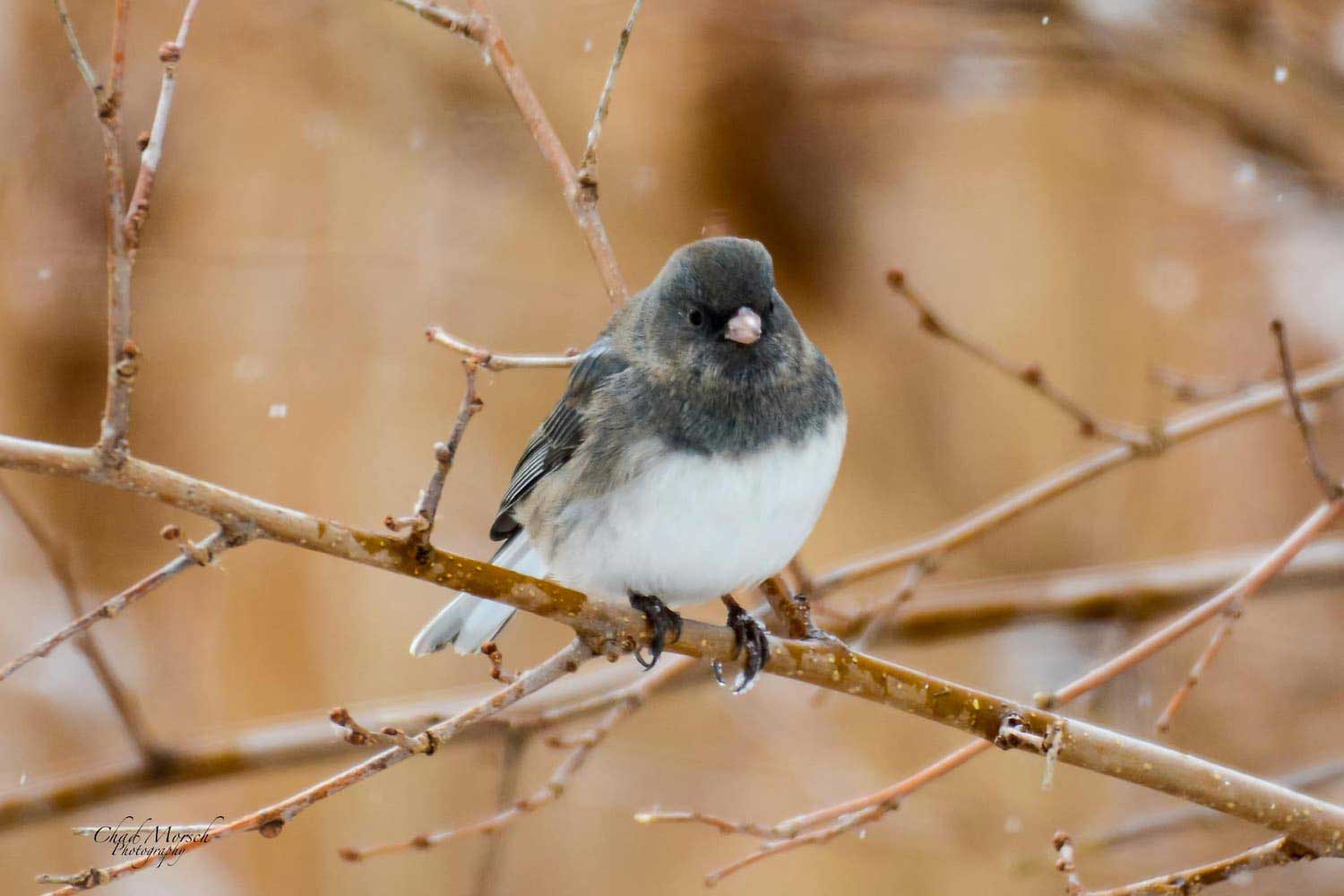Dark-eyed juncos are a sure sign of the season

Winter means many things, but one of the surest — more sure than snowfall and freezing temperatures — is the sight of dark-eyed juncos in our backyards and at bird feeders once the temperatures start to fall.
Dark-eyed juncos are the quintessential snowbird. Like retirees who flock south to Florida and Arizona for the winter, so, too, do dark-eyed juncos flock south. For them, south is the entire contiguous United States as well as parts of northern Mexico. That's because these tiny birds spend the warmer parts of the year on their breeding grounds in the boreal forests of Canada and Alaska.
These birds belong to the sparrow family, and they are one of the most common birds around, according to the Cornell Lab of Ornithology. Their population has been estimated at about 630 million — roughly 300 million more than the population of the United States, which is about 331 million.
Look for juncos in Will County starting around October, although they may begin showing up as early as August, the Illinois Department of Natural Resources reports. They'll stick around until February or early March, when they will begin their migration back north for the breeding season.
During the winter, juncos prefer open woodlands, grasslands and cornfields, IDNR reports. They are also a common sight in our yards. Dark-eyed juncos are primarily seed eaters, and that's what they are looking for when they visit your yard.
Seeds make up about 75% of their diet, and while they mostly eat seeds from chickweed, lambsquarters and other vegetation, they will also eat from bird feeders. Their preferred feeder food is millet, although they will eat sunflower seeds and others, the Cornell Lab reports. You'll often see juncos on the ground under feeders, eating the spilled seed.
Juncos don't just prefer the ground for eating seed. They are ground birds, even in the woodlands where they live. They spend as much as 65% of their time on the ground, according to Birds & Blooms.
They even usually nest on the ground. The females will build a nest from grasses, bark, sticks and moss and then line it with grasses and hair or fur before laying four to five eggs inside, IDNR reports. The eggs are incubated for about 12 to 13 days before hatching, with females laying two broods of eggs a year.
The dark-eyed junco is one several junco species in North America and Central America, but the others have limited ranges and are not found in the eastern United States. However, there is a lot of variation among dark-eyed juncos because there are several recognized subspecies. The junco we see in northern Illinois is the slate-colored junco, with its slate gray back and white belly. It has the widest range of all the dark-eyed junco subspecies, Birds & Blooms reports. Other subspecies include the Oregon junco, the most widespread junco in the western U.S.; the white-winged junco, which is mainly found in the Black Hills region of South Dakota; the pink-sided junco, which lives mainly in Montana and Wyoming; the gray-headed junco, which lives mostly in the Rocky Mountain region; and the red-backed junco, which is found mostly in the desert southwest.
The slate-colored junco that we see locally is the only junco found in the eastern United States. The other subspecies live in the western half of the country, and in some areas multiple subspecies can be found together in the winter, Birds & Blooms reports.
